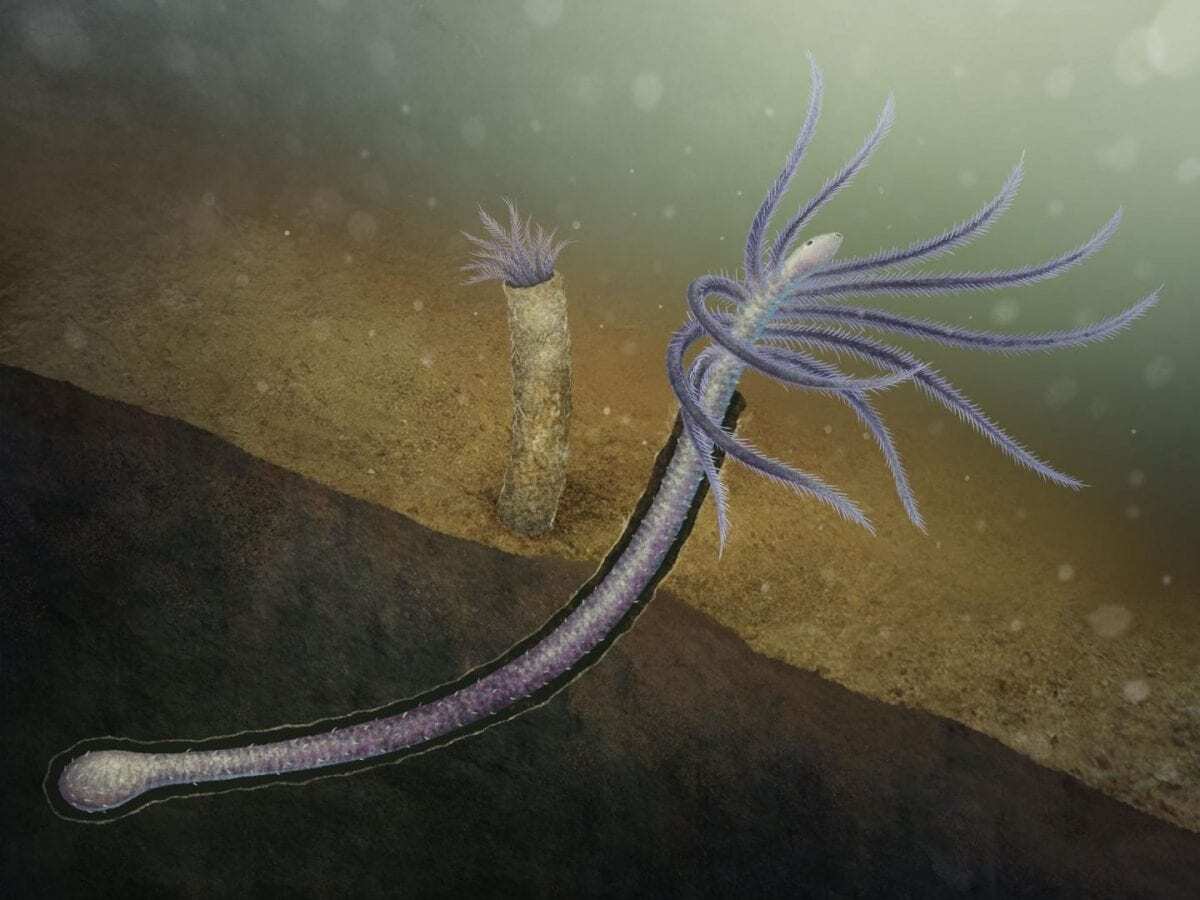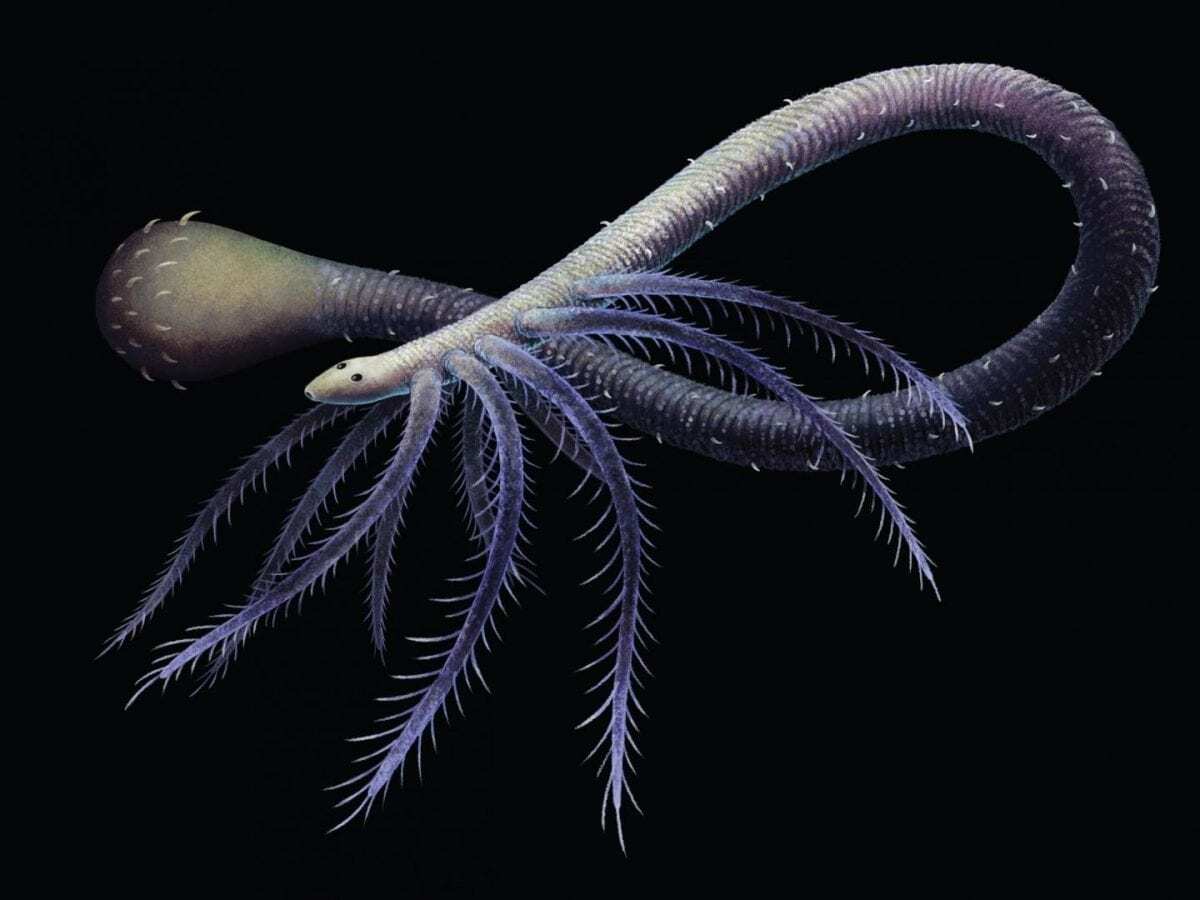Scientists have discovered the earliest known example of an animal evolving to lose body parts it no longer needed.
Mystery has long surrounded the evolution of Facivermis, a worm-like creature that lived approximately 518 million years ago in the Cambrian period.
It had a long body and five pairs of spiny arms near its head, leading to suggestions it might be a “missing link” between legless cycloneuralian worms and a group of fossil animals called “lobopodians”, which had paired limbs all along their bodies.
But the new study – by the University of Exeter, Yunnan University and the Natural History Museum – reveals Facivermis was itself a lobopodian that lived a tube-dwelling lifestyle anchored on the sea floor, and so evolved to lose its lower limbs.
“A key piece of evidence was a fossil in which the lower portion of a Facivermis was surrounded by a tube,” said lead author Richard Howard.
“We don’t know the nature of the tube itself, but it shows the lower portion of the worm was anchored inside by a swollen rear end.
“Living like this, its lower limbs would not have been useful, and over time the species ceased to have them.
“Most of its relatives had three to nine sets of lower legs for walking, but our findings suggest Facivermis remained in place and used its upper limbs to filter food from the water.
“This is the earliest known example of ‘secondary loss’ – seen today in cases such as the loss of legs in snakes.”
The Cambrian period is seen as the dawn of animal life, and the researchers were fascinated to find a species evolving to be “more primitive” even at this early stage of evolution.

“We generally view organisms evolving from simple to more complex body plans, but occasionally we see the opposite occurring,” said senior author Dr Xiaoya Ma.
“What excited us in this study is that even at this early stage of animal evolution, secondary-loss modifications – and in this case, reverting ‘back’ to lose some of its legs – had already occurred.
“We’ve known about this species for about 30 years, but it’s only now that we’ve got a confident grasp of where it fits in the evolutionary tree.
“Studies like this help us understand the shape of the tree of life and figure out where the adaptations and body parts we now see have come from.”
Co-author Greg Edgecombe, of the Natural History Museum, said: “For several years we and others have been finding lobopodians from the Cambrian period with pairs of appendages along the length of the body – long, grasping ones in the front, and shorter, clawed ones in the back.
“But Facivermis takes this to the extreme, by completely reducing the posterior batch.”
The Chengjiang Biota in Yunnan Province, south-west China has been a source of well-preserved Facivermis fossils.
Using these fossils, the study placed Facivermis in the Cambrian lobopodian group, which gave rise to three modern animal groups (phyla): Arthropoda (including insects, shrimps and spiders), Tardigrada (water bears) and Onychophora (velvet worms).
Header Image – Mystery has long surrounded the evolution of Facivermis, a worm-like creature that lived approximately 518 million years ago in the Cambrian period. Credit : Franz Anthony





